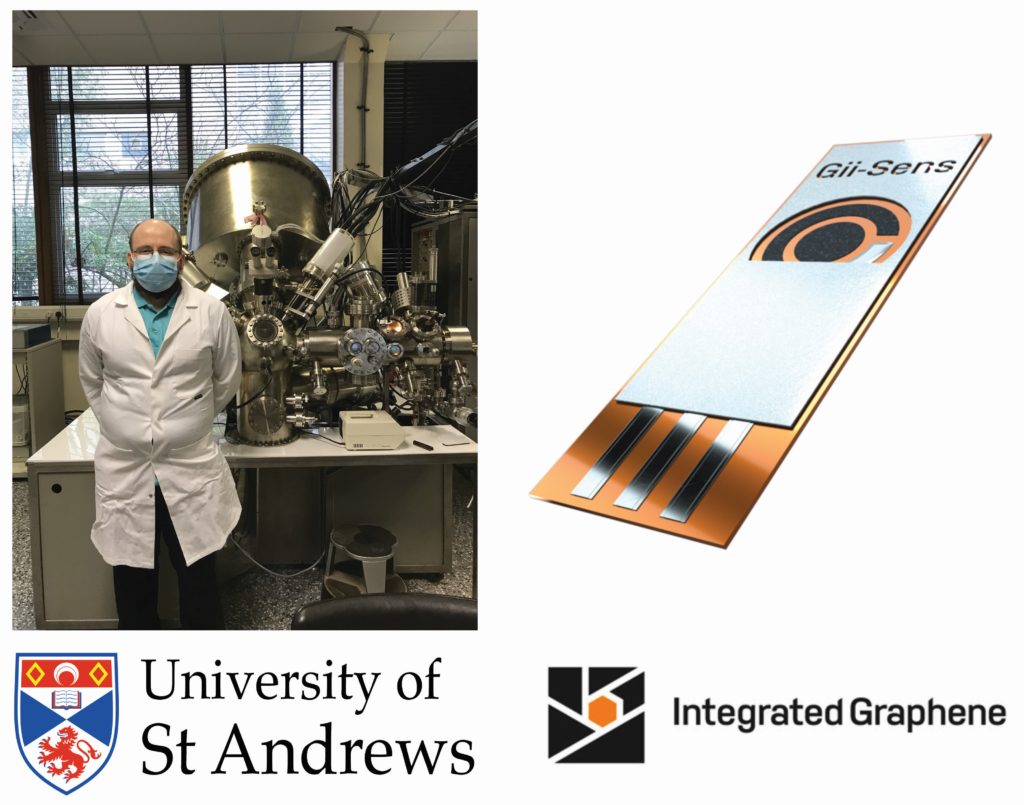Improving Medical Wearables with Material Science
Medical wearables and implants have made it possible for people with otherwise debilitating conditions to live relatively normal lives. For devices such as pacemakers and insulin pumps, it is ideal for their users to forget they have them, and technology has made huge strides in this direction over recent years. One obstacle that remains, however, is imposed by the current limits of fuel technology. Pacemakers available today, for instance, rely on batteries that must be replaced every 5-10 years, requiring surgery for every replacement. One solution is to power medical implants using biological energy, just like a natural organ – self-sufficient with no batteries included. A partnership between the University of St Andrews and the Stirling-based company, Integrated Graphene, is helping to bring the dream of self-sufficient medical implants closer to reality, further improving the quality of life of their users.

Dr Renald Schaub is director of the Scottish Centre for Interdisciplinary Surface Spectroscopy (SCISS), which brings together six research groups from the University of St Andrews. The group is composed of researchers from both the School of Physics and Astronomy and the School of Chemistry and takes advantage of the resources of both to offer a diverse and sophisticated research environment that has attracted attention from partners in both public and private sectors. Since 2008, SCISS has made significant breakthroughs in a variety of fields, including molecular electronics and graphene; however, it is the latter which has proven potential to develop healthcare.
Since its discovery in 1962 (and ‘rediscovery’ in 2004), graphene has been seen as the future of material science. Incredibly strong and light, with high levels of conductivity and the potential to be developed at large scale for a very reasonable price, graphene has clear advantages over well-established materials like silicone, plastic and glass. What remains is to determine how to best utilise the potential of graphene, and how to produce it in a way that is effective to that function.
One area where graphene presents a large advantage over other materials is in biofuels and biosensors, which are becoming increasingly important to the healthcare industry – the global market for biosensors was estimated at $18 billion last year, and is expected to cross the $30 billion mark within the next six years. This market includes products like blood glucose monitors, while biofuel cells have the potential to significantly improve implants and wearables such as pacemakers and insulation pumps. Like a traditional fuel cell, biofuel cells require electrodes to function, and graphene represents a superior choice as a material owing to its outstanding electrical and mechanical properties.
These systems also require a catalyst to operate, for which enzymes are often used due to their unparalleled performance. However, when enzymes are used, they represent the greatest challenge in the construction of these devices. They must be stabilised on the electrode surface through a process known as “immobilisation” before they can work properly, and graphene is potentially an ideal material to support this enzyme loading.
Dr Schaub’s collaboration with Integrated Graphene was built upon a 2017 Knowledge Transfer Partnership (KTP), funded by Innovate UK. The resultant combination of skills and facilities allowed them to optimise the manufacture of novel electrodes for biofuel cell and supercapacitor devices, delivering in return the world’s highest quality pure 3D graphene foam. This directly led to the launch of Integrated Graphene’s product, Gii-Sens, a bio-sensing electrode that offers significantly enhanced selectivity and sensitivity over the conventional design. An upgraded version, Gii-Sens+, was launched in 2021. The success of their innovations has been widely recognised, with the KTP project team being awarded an Outstanding grade by Innovate UK in January 2021 – the first of its kind for the University.